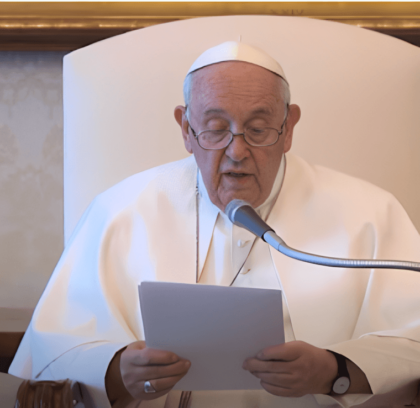


LifestyleChanges
Adopting lifestyle changes can help you, your community, and the environment to achieve a happier and healthier life in a more sustainable planet.
On this page, you will find many useful actions, practices, and tips that each of us can take in our own lives to help achieve Our Common Home vision.

Improve Overall Waste Management
Follow the 3 “R”: Reduce, Reuse and Recycle to help cutting down on the amount of waste we throw away
REDUCE:
- – Buy in bulk to reduce packaging.
- – Bring your own bags when shopping.
- – Avoid disposable and single use items, say “no” to plastic straw.
- – Have your own reusable water bottle and coffee mug.
- – Say “no” to a plastic straw when out to eat.
- – Purchase multi-tasking products that perform different kinds of jobs in one.
- – Choose to “go paperless” when possible for bills and send emails to reach out to people instead of paper mail.
- – Use refillable pens instead of buying too many.
- – Print double-sided and in gray scale; you’ll save ink, paper, and money!
REUSE:
- – Old jars and pots to store items in the kitchen.
- – Tires: Old tires can either be sent to the recycling station or can be used to make tires swing.
- – Used wood: Used wood can be used as firewood or can be used as woodcraft.
- – Newspaper: Old newspapers can be used to pack items when you’re planning to move to another home or store old items.
- – Clothing: These can be turned into bags or tote-bags with the help of tutorials available on the internet. At least old clothes can become cleaning rags.
- – Donate usable clothing, appliances, furniture and other items.
RECYCLE:
- – Buy products that can be recycled and has the recycling symbol on the packaging
- – Avoid buying hazardous materials with chemicals, instead buy non-toxic products whenever possible
- – Use recycled paper for printing or making paper craft.
- – To learn more about recycling rules, click here
- – Composting, which is a natural biodegradable process, turns organic wastes into nutrient-rich food for plants.

Spending Tips
- – Collect change from purchases and donate it to charity.
- – Declutter and give away items you don’t need.
- – Make homemade gifts instead of buying presents.
- – Find ways of cutting cost, Try cutting $5 out of your weekly budget.
- – Set aside electronic devices for one hour of family time every week.
- – Reflect on the purchases you make and what companies your money supports.
- – Put a sign next to the trash can as a reminder to reuse or recycle before throwing away.

Energy Tips
Cooling your home while saving cost:
- – Clean the vents on all air conditioners before using them each year.
- – Keep blinds, curtains, furniture and other items away from the front of the air
conditioner. - – Increase the thermostat temperature in your home by a few degrees, if you have central air conditioning. It will save money and will not make a significant difference in the comfort of your home. If you have a programmable thermostat, you can automatically adjust the temperature for different times of the day or during times when you are away from home for several hours.
- – Keep lamps and other heat producing appliances away from your thermostat. The heat these items create can cause the thermostat to start the air conditioning system more frequently, and keep it running longer and working harder than it may need to.
- – Keep curtains and blinds closed during the sunniest/hottest part of the day. This will keep the sun from warming the spaces in your home.
- READ MORE
Lighting:
- – Replace the light bulbs in the five most frequently used light fixtures in your home with LED or compact fluorescent (CFL) light bulbs, or ENERGY STAR certified light bulbs. Though LED or CFL bulbs can be more costly, they last 15 to 25 times longer so you won’t need to replace them as often as standard bulbs. And they use up to 80% less energy than standard bulbs. You save energy, and money, for the life of the bulb.
- – Lighting controls, such as timers and dimmers, save electricity by turning lights off when they are not in use or lowering light levels where it makes sense for you.
Be sure to select controls or dimmer products that are compatible with the energy-efficient light bulbs and light fixtures you use. And many lighting controls and dimmers can be used with daylight sensors or motion sensors. This can help save more energy, both during the night and during the day. - – Keep your curtains or shades/blinds open to let in sunlight to help warm each room.
For more privacy, use light colored, loose-weave curtains to allow daylight into the room.
Do the opposite in summer. Close curtains or window treatment in summer when sunlight will warm the spaces you want to keep cooler. And seal spaces around windows that let heat escape in winter and cool air escape in summer. - READ MORE
Kitchen area:
- – Keep range-top burners and reflectors clean. They will reflect the heat better when they are clean. And, if possible, cover pots and pans when you cook. The food cooks faster and so you will use less energy. Match the size of the pan to the size of the burner on the stove. This will allow the food to cook more evenly and, therefore, more efficiently. If you have smaller appliances such as toaster ovens, electric pressure cookers, microwave ovens or convection ovens, or crock pots use them whenever possible for smaller meals rather than your large stove or oven. They will save energy and save on cooling costs in summer because they generate less heat.
- – Check the temperature setting in your refrigerator. For most, it should be between 35 degrees and 38 degrees to keep everything fresh. Stand alone freezers should be set at 0 degrees. Make sure your refrigerator door seals are tight. You can test them by closing the door over a piece of paper or a dollar bill – hold the paper so it is half in and half out of the refrigerator. If you can pull the paper or bill out easily, the latch may need adjusting or the seal may need replacing. Wipe the seal down gently with a moist cloth or paper towel to remove any food particles that may be on the seal and try the paper/dollar bill test again. This may resolve the seal tightness issue. Generally, keep the refrigerator door closed as much as possible. Cover all liquids and wrap foods stored in the refrigerator. Uncovered foods release moisture and make the compressor in the refrigerator work harder and use more energy.
- – If possible, place the refrigerator away from the oven or dishwasher and out of direct sunlight. And leave a few inches between the wall and the refrigerator.
If you have an older model, check the owner’s manual for instructions on how to keep the condenser coils clean. - READ MORE
Computers, home office equipment and other electronics:
- – Make sure that computer games that prevent your computer from going to sleep are not left running while you are not using the computer. This is especially important when computers are shared by multiple users. Streaming content with electronic equipment that has earned the ENERGY STAR rating will use 25% to 30% less energy than standard electronic equipment. When streaming content, if possible choose the smallest device that makes sense for the number of people watching. Avoid streaming on game consoles, which use about 10 times more power than streaming through a tablet or laptop.
- – Set your TV to the “home” or “standard” setting, if this option is available. It will reduce the brightness some but also reduce your TV’s energy use by 15% to 30%.
- – If your cable or satellite TV service provider gives you a set-top box as part of your contract, ask for an ENERGY STAR certified model when the box requires changing. These models are about 40% more efficient than conventional models.
While this may not be practical during the current virus crisis, keep this suggestion for when a replacement
of your cable/satellite box is necessary in the future. - – Turn off computers and other equipment like printers and monitors when they are not in use. Use power management settings on computers and monitors which will send your equipment into low-power “sleep mode” after periods of inactivity. Avoid using screen savers as this keeps the screen active even when you are not using it.
- – Use advanced power strips that can prevent electronics from drawing power when they aren’t being used. And unplug battery chargers and other equipment that you are not using, where practical. Many consumer electronics continue to draw power even when they are switched off. This could add an extra 10% to your monthly utility bill.
- READ MORE
